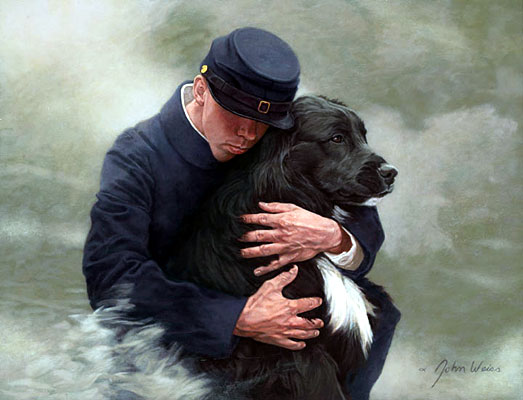
In January, 1942, Japan appeared to be making headway in its territorial conquests during WWII, momentum that suggested triumph over Europe’s colonial powers in the Far East. At sea, however, the United States had won crucial strategic victories which had significant repercussions for Japan’s ability to sustain both its domestic and overseas power. That same month, the AKC and dog lovers across the country formed a civilian organization called Dogs for Defense. The goal was to train dogs to perform sentry duty for the army along the American coastline, and when Lieutenant Colonel Clifford C. Smith of the army’s Quartermaster Corps heard about this, he met with his commander, Major General Edmund B. Gregory, and suggested that the Army use such sentry dogs at supply depots. Gregory approved the experimental program, and in March the same year, the K-9 Corps was created. By the end of the war, Dogs for Defense obtained some 18,000 of the 20,000 dogs used in the effort.
It was not the first time in American history that someone had thought of using dogs in military efforts. During World War I, most dogs served as unit mascots, but not all, and one need only investigate the contributions of Stubby. WWI, however, wasn’t the first time, either.
Nor was the Civil War when dogs helped look for food and water, crossed enemy lines to carry messages, served as prison guards, and in one case, even served as a spy (of sorts). When Emiline Pigott, a spy for the Confederacy, needed to pass information about Union troops to General Pierre Gustave T. Beauregard, she assumed she would be searched. Rather than hide the material under her hoop skirt, she hid the secret documents in a false coat of fur on her dog. No one thought to pat down the dog, and thus, the pair got past Union soldiers and the documents were safely delivered to Gen. Beauregard. He is said to have been quite shocked when Pigott started to cut away at her dog’s “skin,” and no doubt was relieved to see the dog stand calmly as the false hair came way.
The idea of recruiting dogs for military use, however, wasn’t first conceived of during the Civil War, either. We can go back to one of the Founding Fathers of the United States, a drafter and signer of the United States Declaration, Benjamin Franklin. The same man who invented bifocals, the lightning rod, the library chair, swim fins, a long-reach device, the Franklin stove, and the catheter also tried to garner support for building a canine military corps. No formal program ever took hold, but by 1775 at the start of the Revolutionary War, dogs were well established and part of the culture of the Thirteen Colonies.
As an aside, Benjamin Franklin’s son, William, owned a black Newfoundland whom he referenced in correspondences while Franklin was in France. In one letter, a visitor to Franklin’s home promises that “nothing shall tempt me to forget your Newfoundland Dog,” and the second, a note from a neighbor in Paris, mentions her having returned the dog after it strayed.
Image: The Mascot by John Weiss available as limited edition print here

Smokey the Yorkie that was in WWII in the Pacific Island is a wonderful story.
https://www.amazon.com/Smoky-Brave-Yorkshire-Comrade-Arms/dp/0306922541